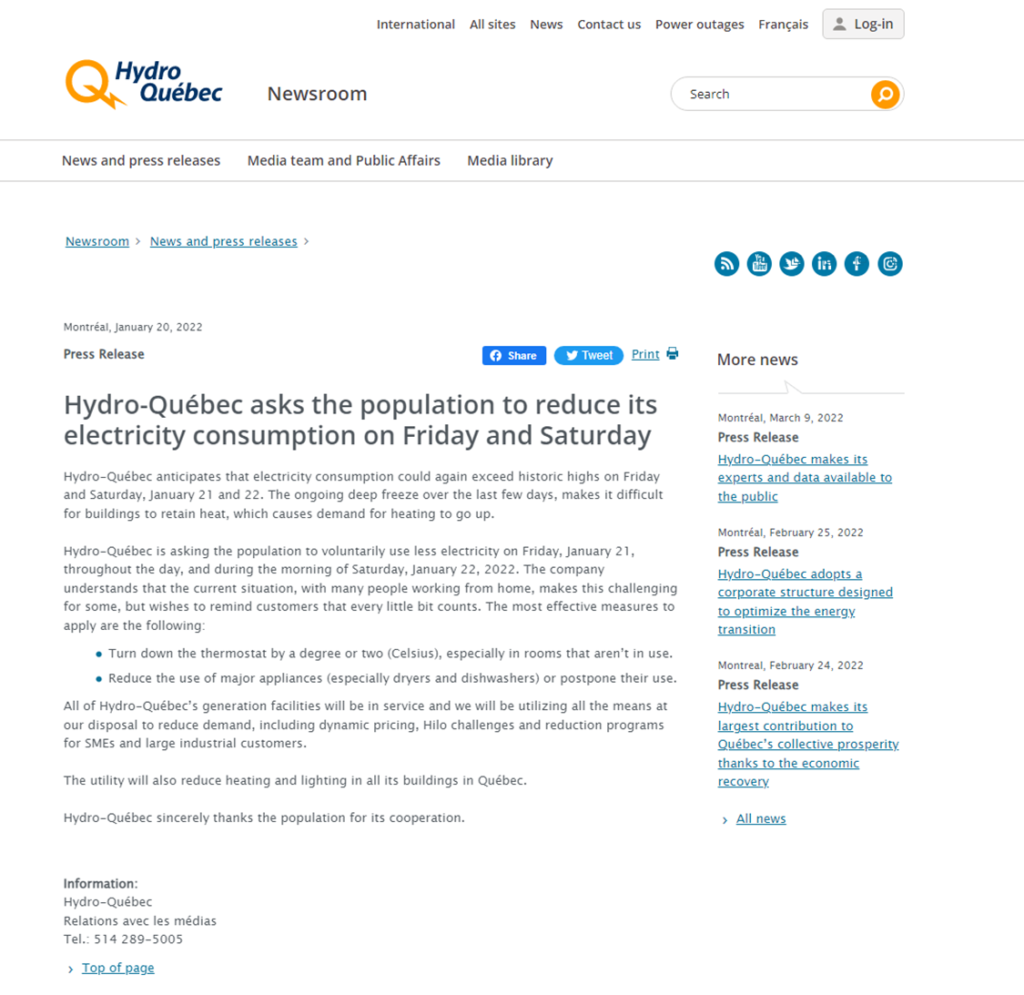Heating And Global Warming: Are We Burning Down The House?
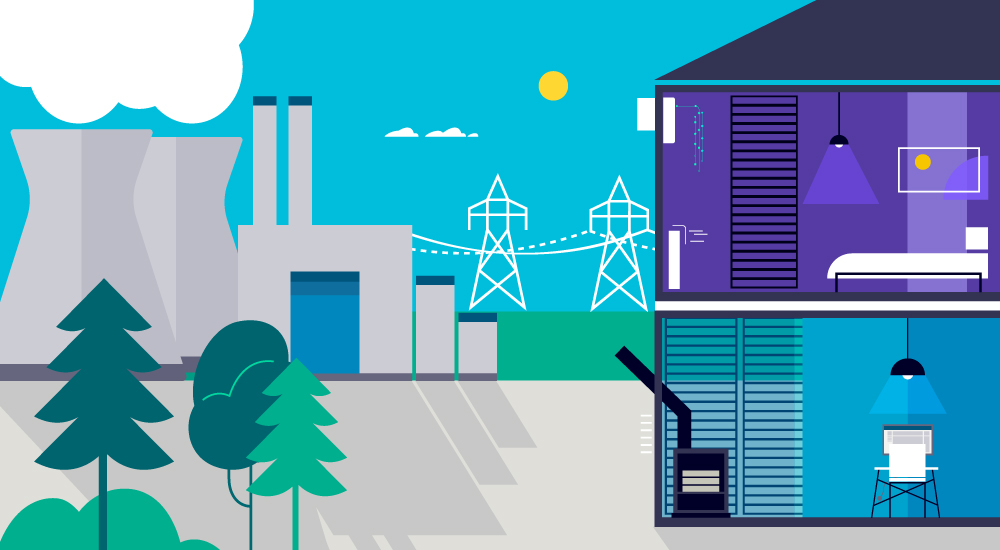
When I started writing this piece a few weeks ago, Environment Canada had just issued an extreme cold warning. The temperature dipped to -24 C outside; it felt even colder with the wind chill. The mercury dipping this low wasn’t precisely the muse I was looking for when writing about global warming. This was abnormally cold for January in Montreal; the frigid arctic jetstream had dipped lower and invaded our city again. If you haven’t experienced it, you won’t understand but let me try to help explain. When you first step outside, you feel the moisture in your nasal passages start to freeze instantaneously, a weird and unpleasant feeling. Ironically, the cold did help; I could spend more time researching this piece since I was stuck inside. I stumbled on several claims that these wild weather variations intensify because of rising ocean temperatures due to global warming. It might sound familiar; it was a 2004 Hollywood summer blockbuster movie plot.
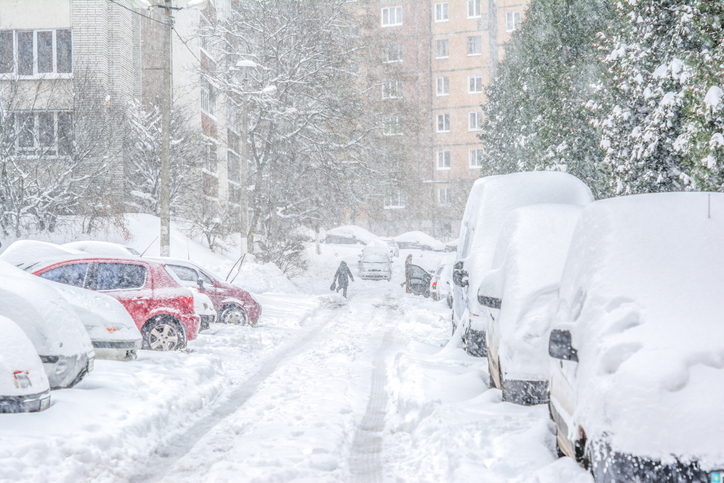
Could ‘The Day After Tomorrow’ come true? A German scientist has echoed the film’s warnings, “a major oceanic circulation system is becoming more unstable – with concerning implications for the climate.”
Within North America, Quebec is distinct for its traditions and usage of French as the common language. Through the eyes of a thermostat, we can add another item to the list. The majority of households use electric heating. When the temperature drops, we need even more electricity to stay warm. During this unusually cold spell, Hydro-Quebec, the local electric power utility, requested the population reduce power consumption during peak hours to minimize the strain on the grid:
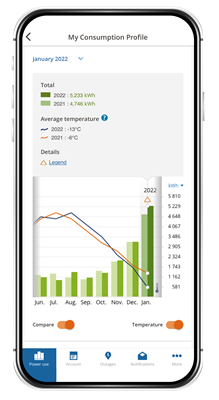
Quebec set a single-day consumption record of 40,300 megawatts by 8 am on January 21st, 2022. It broke the record of 39,900 megawatts set 10 days earlier. Heating, not cooling, sets peak demand in la belle province.
As the name indicates, Hydro-Quebec’s power generation mix is primarily hydroelectricity – hovering around 97% with wind and other renewables balancing it out. They have a limited number of gas-powered stations, only used in extreme demand. Their electricity produces relatively low greenhouse gas emissions, well below the industry average.
“The power industry is responsible for 12% of all GHG emissions in Canada, but less than 1% in Québec. Québec’s outstanding record in this respect is largely due to the fact that hydroelectricity—which is clean, renewable energy—constitutes almost all the power generated by Hydro-Québec.”
Taken from https://www.hydroquebec.com/sustainable-development/our-approach.html
How does that compare to the rest of the world? We can crunch the numbers using the global energy mix for electricity and associated carbon emissions intensity data from Ourworldindata.org. In Quebec, generating 40,300 MWh of electricity produces 1334 tons of carbon dioxide equivalent (CO2e) emissions. For the world energy mix for electricity generation, that number jumps up to 17909 tons of CO2e emissions. Over thirteen times (13x) more. As bad as that data point might seem, it gets far worse.
According to the International Energy Association (IEA), heating accounted for almost half of global final energy consumption in 2021. Only 28% of global heating equipment is electric (conventional or heat pump). A whopping 48% is coal, oil and gas.
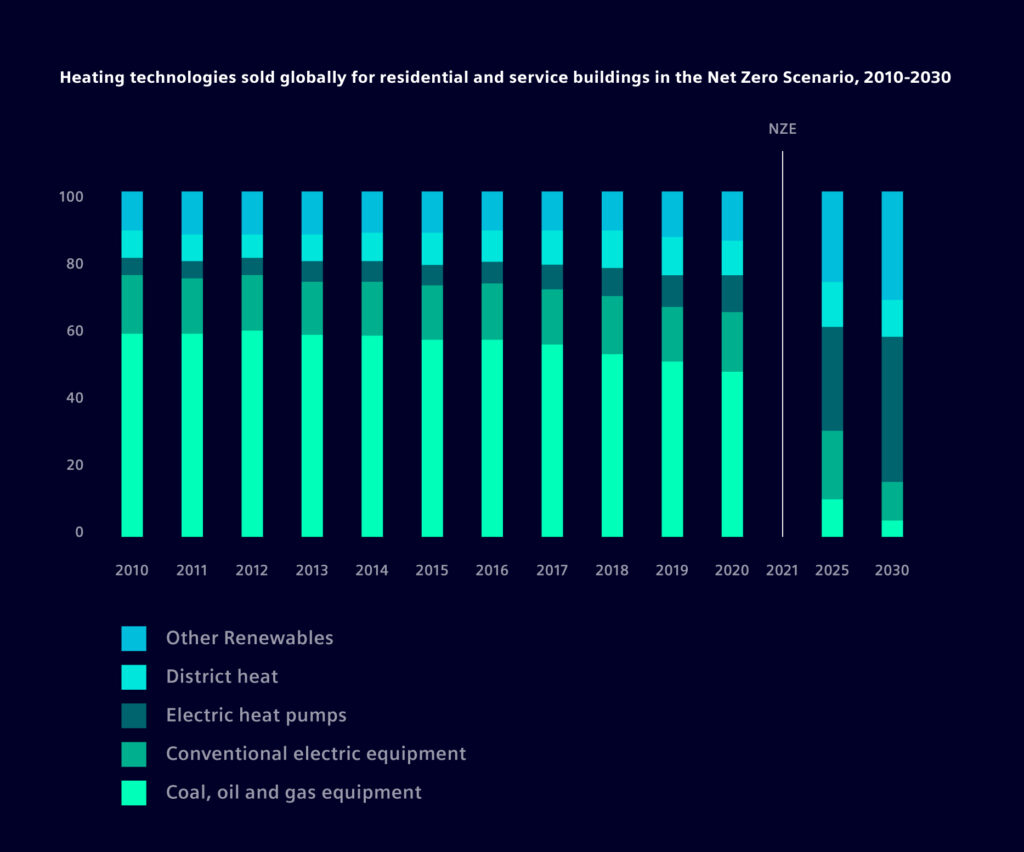
Heating is the most significant carbon-emitting activity in buildings. Accounting for the coal, oil and gas used directly and indirectly via electricity generation for heating, 65% of all heating equipment produces greenhouse gases in some form. While the trend over the past decade is moving in the right direction, the damage has been done.
More extreme, more often: the impacts of global warming
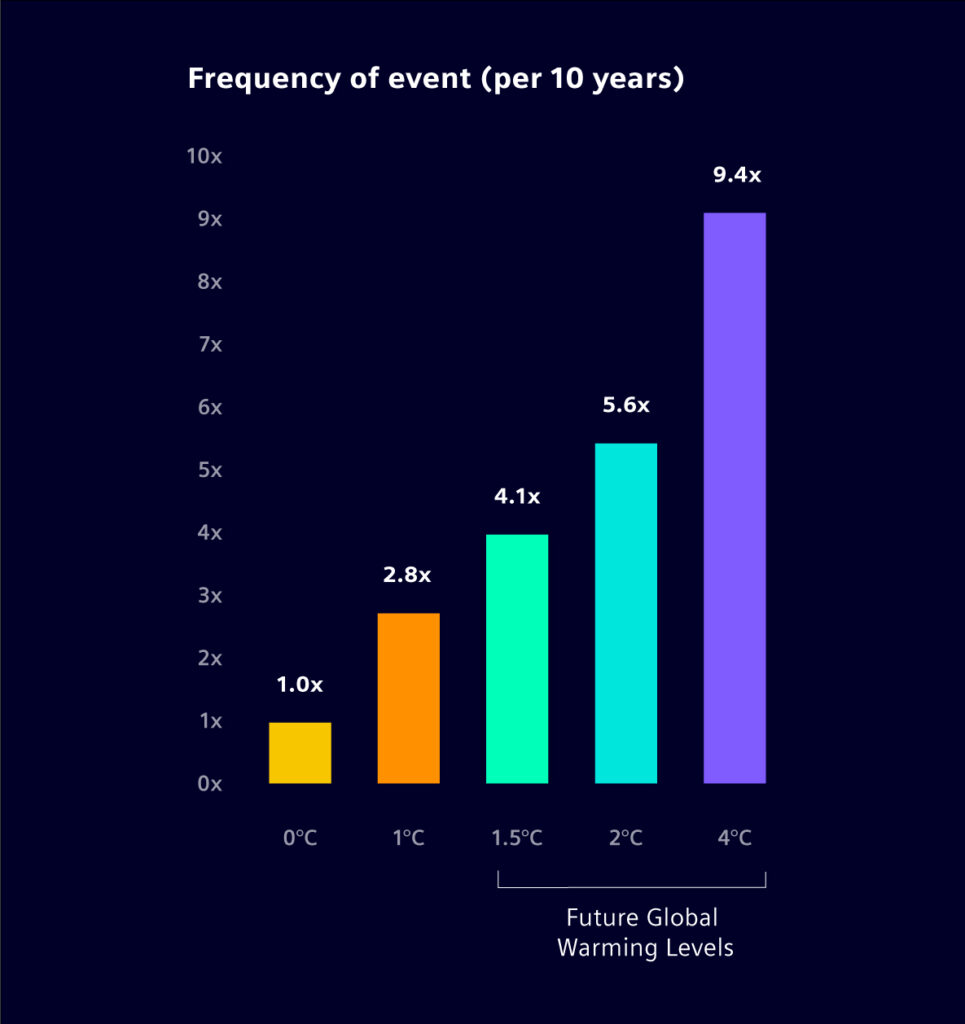
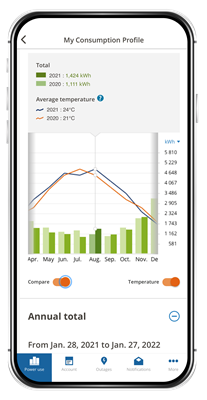
How does this compare with cooling
Montreal summers don’t offer much relief either. August 2021 was the hottest on record for the city. We had two heatwaves that month, temperatures above 30ºC before factoring in the humidex.
Humidity is dangerous because the closer the relative humidity reaches 100%, the less your body can naturally cool down. Sweat evaporation is how our body tries to restore thermoneutrality. Higher humidity reduces the rate of evaporation, making it harder for you to cool off. For more on the sustainability of air conditioning, I suggest you read my blog “Have We Grown Too Comfortable with Air Conditioning?“
Quebec is avoiding a climate disaster when it comes to heating
In his book How To Avoid A Climate Disaster, Bill Gates offers these three steps to decarbonize heating (and cooling)
- Electrify
- Decarbonize the power grid
- Use energy more efficiently
Quebec has checked off steps one and two – more on step three in a bit. The question is, does Mr. Gates offer sage advice? As I already mentioned, Quebec has high adoption of electricity as the primary heating system energy type compared to the rest of North America. As heating needs vary depending on average temperature, a global or continental comparison would skew things. Let’s compare the data with Ontario — Quebec’s neighbour to the west, and a comparable climatic region.
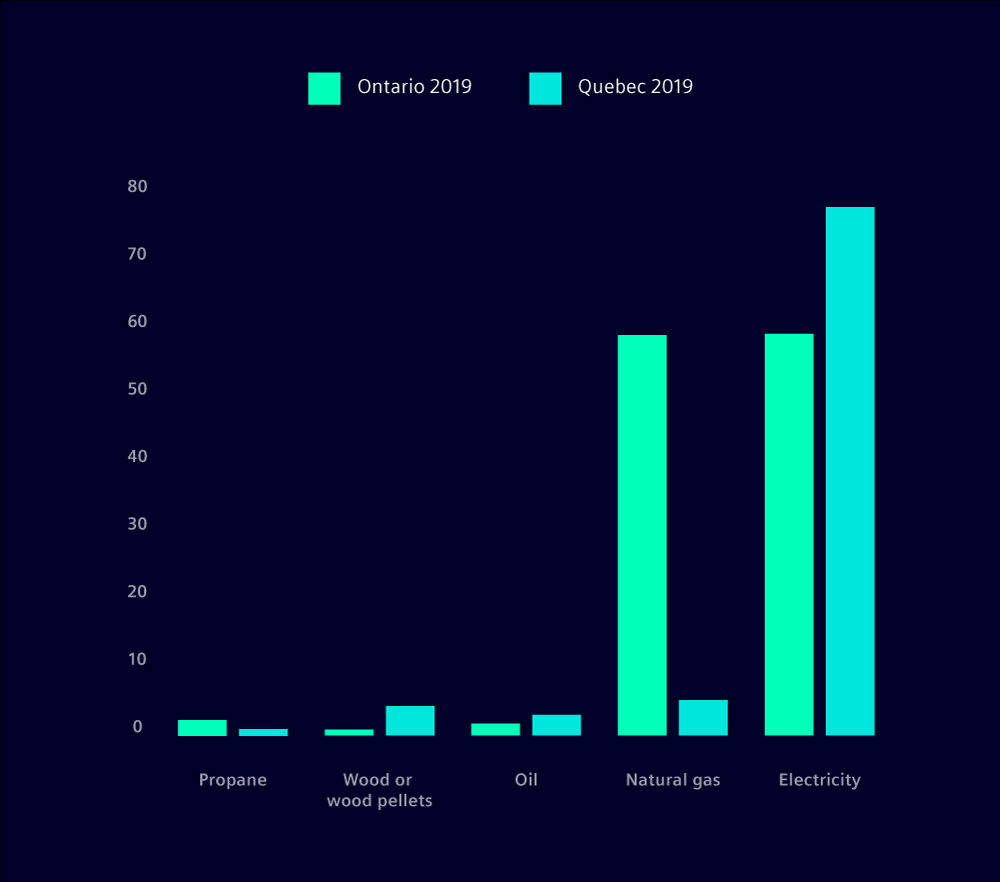

Given the difference in primary energy types, Ontario’s significant increase in household greenhouse gas emissions is unsurprising. Adjusting for the number of dwellings recorded in each province during the last census, the average household in Quebec releases 2.40 tonnes vs 3.93 in Ontario.
Quebec might be exceptionally low; however, Ontario and Canada have a relatively low carbon electricity grid. Using Canada’s electricity generation energy mix percentages for 2019 from Ourworldindata.org, 40300 MWh would produce only 5475 tonnes of CO₂e, 70% less than the world average mix.
So if you are reading Mr. Gates, you were right. Hopefully, these metrics convinced you of the benefits and urgency of electrifying HVAC equipment and decarbonizing the electric grid.
How to be more efficient
We have proven electric alternatives that work and need more adoption globally. That is not an engineering innovation issue per se. Does that mean the work is over? No. From a climate crisis POV, the focus is higher energy efficiency via improvements to existing technology and discovering breakthroughs. This will limit upstream emissions as the world figures out how to decarbonize all electricity. It will also avoid further energy insecurity as many green alternatives, so far, are skewed towards electrification.
Improving building envelopes reduce energy losses
A rusty old valve worsens, and the occasional drip becomes a slow stream. Leakage. Your instinct would be to repair it. We may not see it as clearly as water coming from a pipe; however, air leakage due to poor building envelopes is just as wasteful. It means unnecessarily oversizing equipment to compensate for losses that inflate infrastructure and operational costs. The simulation of building envelopes can help achieve the lowest energy density required for proper temperature and humidity control.
High-efficiency heat pumps
When I compared the primary energy types for heating between Quebec and Ontario, I didn’t break down the data by equipment type – furnaces, baseboard heaters, heat pumps. Here are some key metrics:
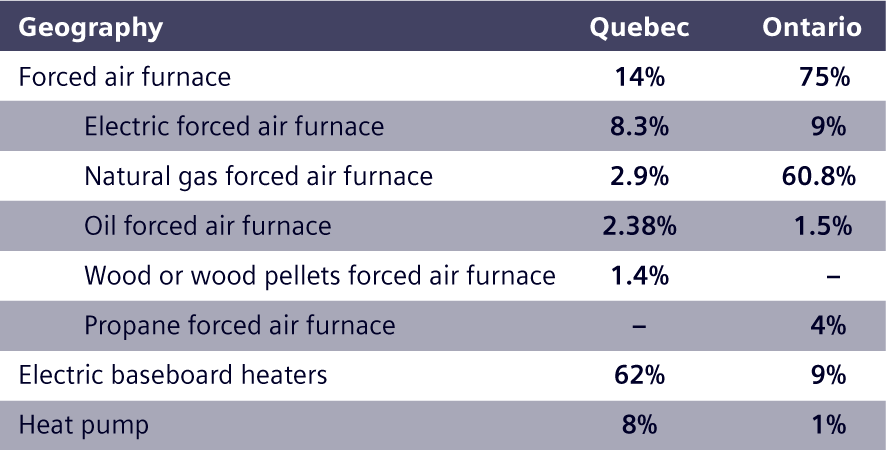
For most residential households, all flavours of low-carbon heat pumps (air, geothermal, water) are the most electrical efficient option. However, even in electrically progressive Quebec, not even 10% of the population relies on it. The most common type is electric baseboard heaters, which are far more energy-intensive and thus less efficient. This is a global trend:
The IEA projects heat pumps could easily “supply more than 90% of global space and water heating at a lower CO₂ emissions level – even considering the upstream carbon intensity of electricity”. One of the factors attributed to the slow adoption is the perception of poor performance in colder temperatures, which is increasingly invalid.
Substantial energy savings
What percentage of energy savings can these two solutions potentially bring when retrofitting? I will use my own home to demonstrate how much energy is lost due to poor building envelopes and inefficient heating equipment. Remember, we are using energy as a metric for carbon emissions. It is not the case where I live; however, 60% of the world’s electricity is generated with fossil fuels. In most of the world, reducing energy intensity reduces CO₂.
Some background. My house was built in the 1960s. It is a single dwelling home, ideal for a family of four. The doors and windows were changed almost 20 years ago. Besides that, since construction, no other significant work was done on the envelope. Around ten years ago, I changed the electric furnace and heat pump, opting for the most efficient models available then. I recently had an energy study performed on my house. According to the report, mine uses 37.5% more energy for space heating, cooling, water heating, and ventilation than a typical new house.
The following charts compare the current levels to the potential savings from upgrades to the envelope and heating system, the same type of efficiency improvements I’ve outlined in this piece.
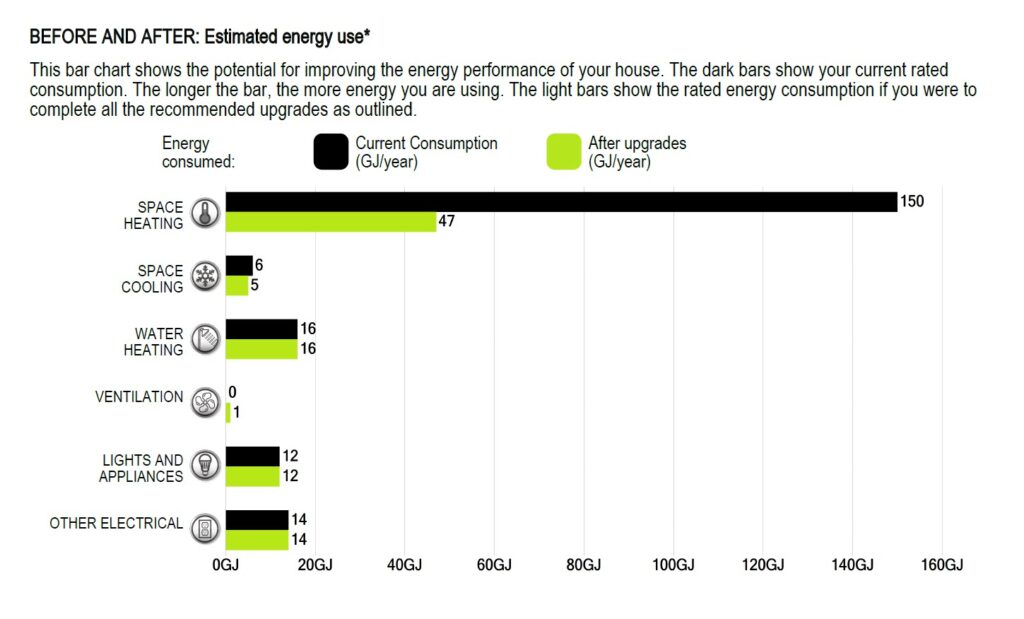
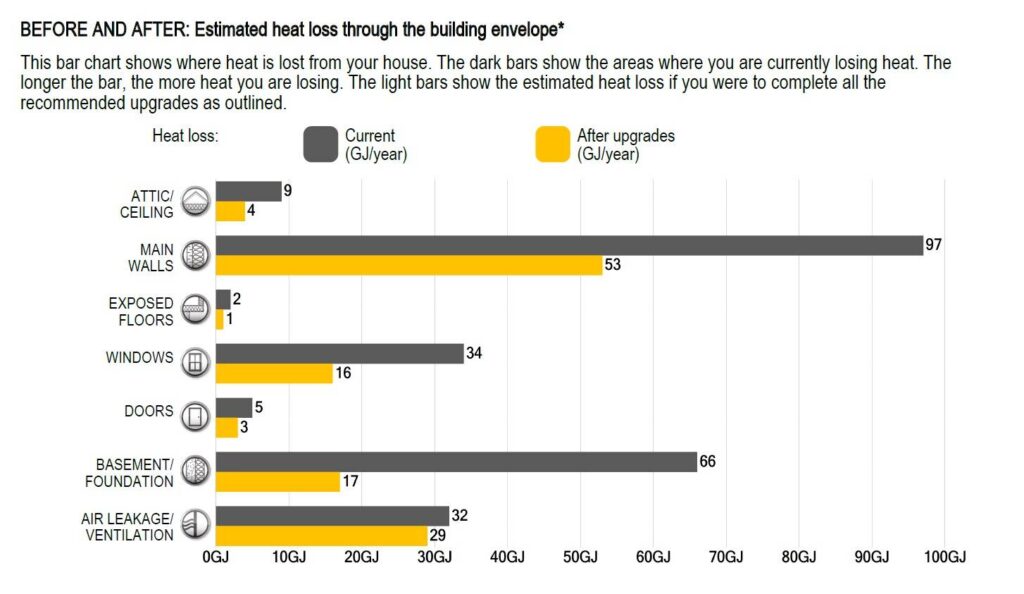
This report suggests I could save half of my energy cost, with the rated energy intensity dropping from 0.76 to 0.36 GJ/m2/year. The energy consumed for space heating could be reduced by 70%. In January 2022, my consumption was roughly 5,229 kWh. Looking at my consumption profile, my monthly baseline in non-winter months is about 1,100-odd kWh. So roughly 4,000 kWh in January 2022 was for heating. If the proposed reductions in space energy heating are accurate, the upgrades would have reduced it to 1253 kWh. Again, using the world generation electricity mix for emission levels, CO₂-related emissions would go from 1.78 tonnes to 0.56 tonnes. This is why more research, development, and innovation must be done to improve heating equipment and heat pump technology further.
Proven solutions
The Simcenter portfolio offers a proven solution that extends across various aspects of HVAC performance engineering – sizing, efficiency, noise, performance and reliability – to meet the world’s sustainable heating needs. The depth and breadth of the simulation software, testing, and engineering services make Simcenter uniquely suited for entities of all sizes working on engineering problems of all sizes. There’s a fit for all needs: designing a specific component or an entire system, virtual prototyping a novel approach or exploring performance gains with intelligent design space exploration, benchmarking, testing and correlating. All made more straightforward with simulation process and data management, cloud connectivity and vast design expertise.
Sanden, a heat pump manufacturer, developed unique CO₂ technology for heating and cooling applications, including heat pump water heaters, space heating heat pumps and air conditioners. Their goal was to design components that maximize the thermal efficiency of heat pumps. Using Simcenter saved time by employing automated design space exploration to find the best design quickly and saved costs by reducing the need for physical prototypes. Read the full story here.
Thermolift is a startup developing a Vuilleumier heat pump with the help of Simcenter, which could potentially reduce building heating and cooling energy consumption and costs by 30 to 50 percent. Read the full story.
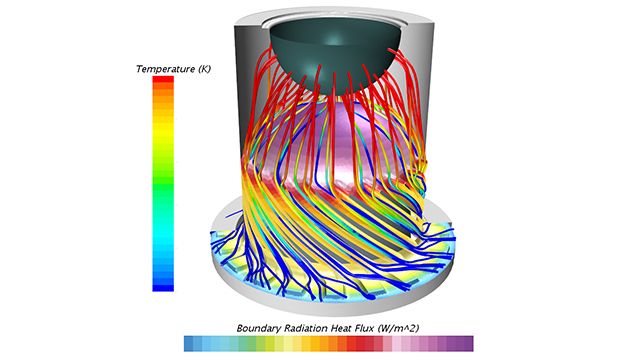
As they highlight in this video case study, EMA Engineering & Consulting relies on Simcenter for designing safe and sustainable buildings.
The heat is on
And by that, I mean my electric heating. It’s only -6ºC today, so my heat pump is doing the heavy lifting. Spring is on the way. After looking at the potential savings, so are renovations to make my house more energy-efficient. The problems and solutions needed to solve the world’s total greenhouse gas emissions are far from being in my or any one person’s control. They are vast. It can feel overwhelming. That leads to what might be the biggest threat of all – the hope and feeling that someone else, something else, will save the planet. However, just like me, I hope you realize there are things in your direct control, personally and professionally. And to that degree, it’s on each of us to do what we can to turn down the world’s thermostat and avoid burning down the house.
